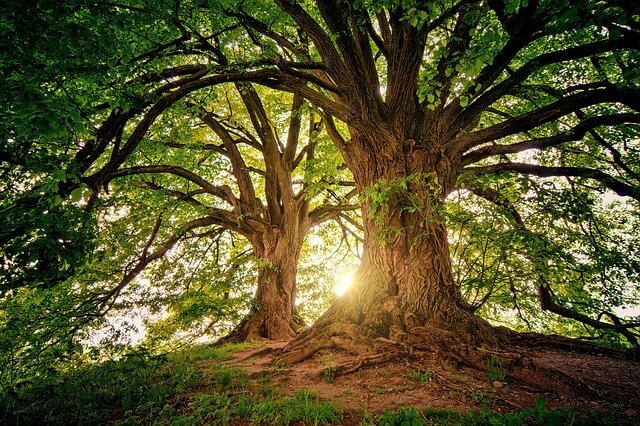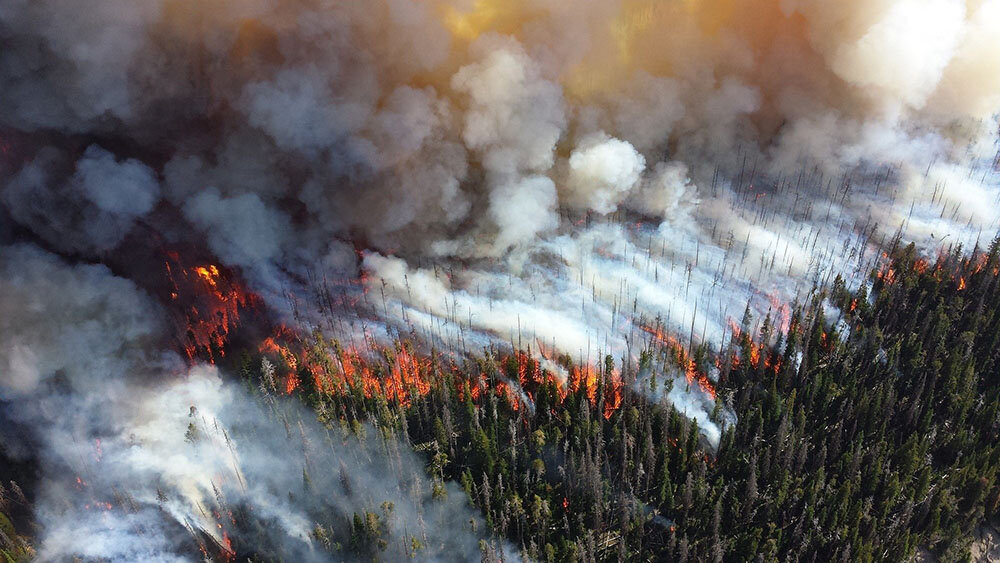
Giving Woodland Space To Breath
Inaction on climate change since the 1960s has meant that we will have to be more innovative and ingenious in our solutions to rapidly address emissions and restore natural biodiversity in the seven short years that we have to avert the worst of the climate crisis.
Yet, while much attention is given to large-scale technological solutions, sometimes the ideas that might have the greatest impact take their inspiration from nature and require us to be less interventionist, rather than more so.
One such approach gained a great amount of attention last week – a compelling video from Ray O’Foghlu outlining how we might create pockets of land around existing woodland to allow them to regenerate naturally.
We spoke with O’Foghlu, who works for An Taisces Learning About Forests (LEAF), about the inspiration for this approach, how it might be implemented, and the potential ecological and financial benefits that this might generate.
Natural Regeneration
As per his video, O’Foghlu proposes that land owners set aside parts of their property to encourage forests to naturally regenerate and connect existing areas of woodland to create corridors in which biodiversity can thrive.
“I made the video in response to what I see around me in West Clare, and what I see is forest’s natural inclination is to grow – they want to expand, and they’re efficient at expanding. But they don’t because we actively suppress them.”
That suppression saw Ireland’s forest cover drop to around 2% until just a few decades ago. While incentives have seen the total forest cover in the country climb to 11%, this is still the lowest percentage of all European countries, according to Teagasc – and just 2% of our forest land is made up of native species, which offer greater benefits for native biodiversity.
Much of this comes down to Ireland’s relationship with forestry management, which lacks behind our European neighbours according to O’Foghlu: “Our woodland management culture is still in its infancy really, even though our association with woodlands is tied into the very core of who we are in all the townlands in Ireland, and all the core myths and legends that take place in woodlands.”
“In terms of modern forestry, unlikely Germany or France where hundreds of years of forest management has been baked into their culture, forestry in Ireland only really started up in the 1950s and 1960s. Our system involves planting trees at the same age, and cutting them all down at the same age, whereas in central Europe they selectively extract trees from a forest and allow the forest to pick the next tree that will go in its place.”
This is the natural regeneration that O’Foghlu is proposing.
The Big Idea
By setting aside land adjacent to existing woodland and protecting it from cattle, nature will dictate its recovery to its natural state, selecting the best species to thrive in that location, and aiding the biodiversity on that patch of land.
The benefits of this could be wide-ranging – both from an ecological and financial perspective, as O’Foghlu explains: “Nature is incredibly prolific and it takes a lot of money, chemicals and effort to suppress it. Once you give nature room to breathe, it comes back almost immediately – and the benefits would kick in from the minute the fence goes up.”
Credit: Ray O’Foghlu
“Today, when you’re trying to establish a woodland in Ireland, the process is worrisome in a lot of ways.”
“The first thing they’ll do is drain the soil - and of course that can release a lot of carbon - while the next stage is to spray the surface layer with chemicals to kill all the potential competitive vegetation to the new trees.”
“Natural regeneration shows a much higher level of structural biomass at every stage, and we see that they support greater carbon sequestration as fungal mycelium networks are kept intact, meaning that we keep more carbon in the ground and actually increase the capacity to keep it locked away”
A 2013 study from Lund University, found that mycorrhizal fungi – those which have a symbiotic relationship with the roots of plants, whereby they exchange nutrients – hold 50-70% of the total carbon stored in leaf litter and soil.
The natural regeneration process also offers benefits for reducing soil erosion and ensuring less surface run-off into rivers – resulting in better carbon storage and cleaner waterways – while also allowing wildlife to travel more safely between areas of woodland and coming into contact with humans and farmland less often.
Incentivising change
While the approach of natural regeneration requires significantly less intervention and could be more cost-effective than traditional forestry approaches, O’Foghlu is keen to point out that landowners should be reimbursed for supporting this approach – and help lead the way.
“In the short term we absolutely have to compensate and remunerate the land owners, as from their point of view you’re asking them to give up grazing land, which they’d see as a taking a financial hit,” he states.
“I think they should also be farmer-led, where farmers are asked to help connect one piece of woodland with another – because invariably farmers know their land better than anyone.”
However, O’Foghlu is clear that this should also be seen as an opportunity to change how we value our land beyond its immediate financial worth, and to see the role that it can play in helping us to fight climate change.
“The big challenge is that, while funding is always available for forestation schemes, there is always the expectation that there will be a windfall – whether that’s in a couple of years or 40-50 years”, he continues.
“The problem with this is that there won’t be as obvious a dividend at the end, so once your period of initial premiums for fencing off the land is over, how do you ensure the land continues to be used in the best way for biodiversity?”
“One way could be to build into those initial premiums that the land is permanently set aside for forestation, and can never go back - and hopefully beyond that there would be payments for environmental services such as clean water, carbon sequestration, supporting pollinators”
Native forests often exist in isolated pockets, separated by farmland. Credit: Tom Spencer
Alongside reflecting the ecological value of the land in our response to climate change, the upcoming review to the EU’s Common Agricultural Policy (CAP) may also offer incentives for farmers to dedicate more land to encourage greater biodiversity, O’Foghlu suggests:
“It looks like the CAP will mandate that around 10% of farmland needs to be set aside to support biodiversity. While in some areas like Clare that’s not going to be a problem because there’s lots of hedgerows and wetter areas that are already set aside, in some more intensive landscapes there’s often not that much available at the moment – so rather than farmers being paid for donating land to naturally regenerating woodlands, these woodlands might instead help the farmer to meet the minimum regulations of CAP so that they can gain the financial rewards of the system.”
Biodiversity super highways
In addition to using farmland to connect existing pockets of woodland, O’Foghlu believes that motorway corridors also offer a great opportunity to connect nature as well as people.
“I’d love to see a national scheme to connect up these pockets of biodiversity,” he states. “With a bit of creativity we could even use motorway corridors – there’s a lot of land purchased either side of them, often with a lot of native woodland.”
Wildlife bridges can span motorways to allow both creatures and plants to safely traverse dangerous man-made structures. Credit: Bored Panda
“If you could manage motorways to give them wildlife-safe underpasses and use them to connect existing pockets of woodland habitats, we could incorporate biodiversity into engineering infrastructure."
Such an approach would also help to reduce traffic noise and associated illnesses – such as high blood pressure, depression, heart disease and strokes – while also replicating the successes witnessed in red squirrel and pine marten populations in recent years, which have resulted from providing them with better established and stable habitats.
With our own global habitat at risk from the climate crisis – and with just seven years to avert the worst case scenario – we welcome Ray O’Foghlu’s innovation and hope to see that such an approach will be adopted nationwide, and beyond, in the very near future.
What To Read Next
7 Years to Act: The Climate Crisis Timeline
We have less than 8 years to avert the climate crisis, today we highlight what will happen if we don't - and show how you can lower your carbon footprint
Climate Crisis – Not Climate Change
Find our why we're in the midst of a Climate Crisis, rather than living alongside Climate Change - and why this matters for encouraging climate action






